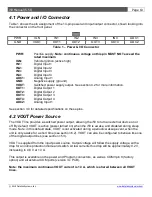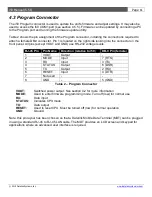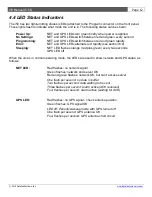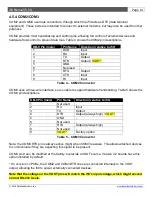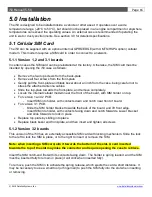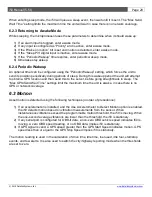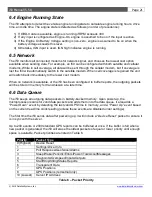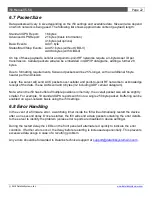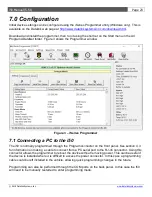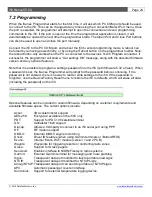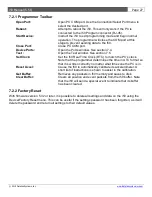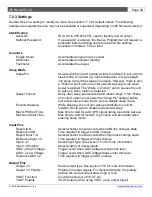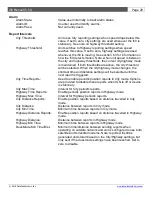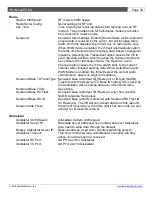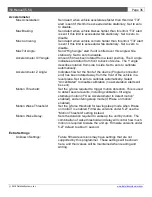
i50 Manual (5.51)
Page 24
© 2018 Datalink Systems, Inc.
www.datalinksystemsinc.com
7.2 Programming
When the iSeries Programmer starts for the first time, it will ask which PC COM port should be used
to connect to the i50. This can be changed at any time using the Connection/Select Port menu. Once
the port is selected, the programmer will attempt to open the connection and send programming
commands to the i50. If the port is open at the time the programmer application is closed, it will
automatically be opened the next time the programmer starts. The
Open Port
and
Close Port
buttons
can also be used to open and close the port manually.
Connect the i50 to the PC COM port, and reboot the i50 to enter programming mode. A reboot can
be forced by removing power briefly, or by using the
Reboot
button on the programmer toolbar. Note:
the reboot button only works when the PC is connected to the device’s RJ-45 Program connector. If
successful, the programmer will show a “Got settings OK” message, along with the detected firmware
version and any optional features.
Note that it is possible to program a settings password into the i50 (with firmware 5.32 or later). When
a password is set, the iSeries Programmer will prompt for the password before continuing. If the
password is not entered, there is no way to read or write settings to the i50. If the password is
forgotten, use the Device/Factory Reset menu to restore the i50 to defaults, which will erase all data
(including the password) on the i50.
Optional features can be included in custom firmware, depending on customer requirements and
available firmware space. The current options include:
Accel:
3D accelerometer support
AES-256:
Encryption available on the i50C only
PDT:
Support for PDT-100 satellite terminal
GS:
Globalstar 1620 support
Dial-up:
Allows a third-party to connect to an i50 serial port using PPP
RF:
RF modem support
OBD-II:
External OBD-II engine monitoring
Driver:
Driver ID features (when using Garmin terminals or iButton/RFID)
Ezurio:
Internal Ezurio Wi-Fi module (version 1 and 2 PCB)
Waypts:
Waypoints for triggering reports or controlling radio zones
Grace:
Support for Grace pagers
Kenwood:
Enables interface to NXDN/Fleetsync radio systems
Garmin:
External Garmin terminal for messaging and route planning
Signs:
Transparent data port modified to talk to portable road signs
NTCIP:
Transparent data port modified for NTCIP signs
Amsig/NTCIP: Transparent data port can send to portable or NTCIP signs.
APC:
Automatic passenger counter interface.
Suntronics:
Support for external temperature logging device.

